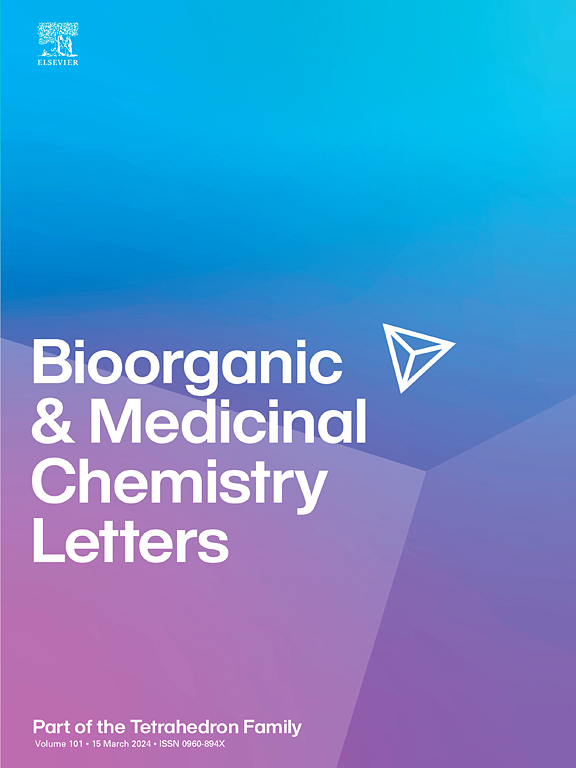新型磺胺衍生物氨基肽酶N抑制剂的设计与合成
IF 2.5
4区 医学
Q3 CHEMISTRY, MEDICINAL
引用次数: 0
摘要
根据氨基肽酶N (APN)活性位点的结构结构,我们设计并合成了一系列具有磺胺支架偶联羟酸锌结合基序的新型APN抑制剂。其中,化合物2k具有与阳性对照药物Bestatin相同的抑制活性(IC50 = 4.3 μM)。值得注意的是,我们的化合物对锌依赖性金属肽酶MMP-2表现出明显的选择性。SAR研究表明,邻二取代的苯基可以导致一个数量级的改善。分子对接研究证实了化合物2k的新结合模式。预测的ADME性能突出了2k的亲水性、细胞渗透性和人体口服吸收比贝司他汀更好。这些结果验证了同时占据S1 ‘和S2 ’口袋是发现具有非典型结合模式的APN抑制剂的可行设计策略。我们预计,具有高选择性的化合物2k将作为一种结构独特的探针候选物,用于研究APN在肿瘤血管生成和转移中的病理生理作用。本文章由计算机程序翻译,如有差异,请以英文原文为准。

Design and synthesis of novel sulfanilamide derivatives as aminopeptidase N inhibitors
Guided by the structural architecture of the aminopeptidase N (APN) active site, we designed and synthesized a series of novel APN inhibitors featuring sulfanilamide scaffold coupled with hydroxamate zinc-binding motifs. Among the series, compound 2k exhibited the inhibitory activity (IC50 = 4.3 μM) as effectively as a positive control drug Bestatin. Notably, our compounds exhibited pronounced selectivity against zinc-dependent metallopeptidase MMP-2. The SAR research indicated that ortho-disubstitution in the phenyl group could lead to an order of magnitude improvement. A molecular docking study validated the novel binding mode of compound 2k. The predicted ADME properties highlighted the improved hydrophilicity, cell permeability, and human oral absorption of 2k than that of bestatin. These results validated simultaneously occupying S1’ and S2’ pockets as a viable design strategy for discovering APN inhibitors with a non-canonical binding modality. We anticipate that compound 2k with high selectivity will be harnessed as a structurally distinctive probe candidate to investigate the pathophysiological roles of APN in tumor angiogenesis and metastasis.
求助全文
通过发布文献求助,成功后即可免费获取论文全文。
去求助
来源期刊
CiteScore
5.70
自引率
3.70%
发文量
463
审稿时长
27 days
期刊介绍:
Bioorganic & Medicinal Chemistry Letters presents preliminary experimental or theoretical research results of outstanding significance and timeliness on all aspects of science at the interface of chemistry and biology and on major advances in drug design and development. The journal publishes articles in the form of communications reporting experimental or theoretical results of special interest, and strives to provide maximum dissemination to a large, international audience.

 求助内容:
求助内容: 应助结果提醒方式:
应助结果提醒方式:


